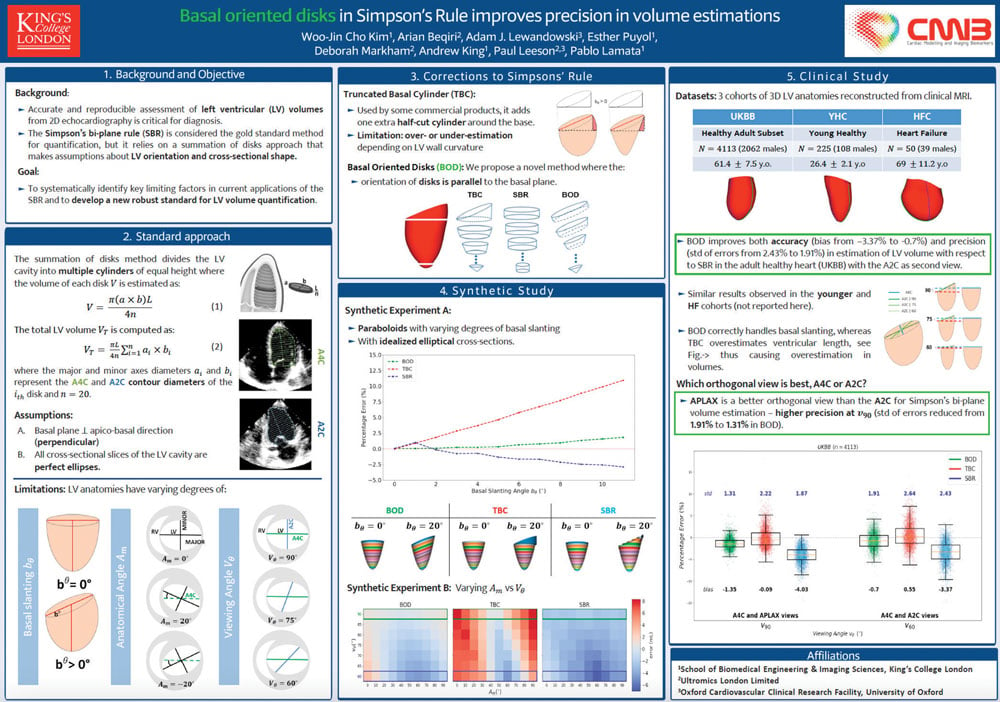Woo-Jin Cho Kim, Arian Beqiri, Adam Lewandovski, Esther Puyol, Deborah Markham, Andrew King, Paul Leeson, and Pablo Lamata.
Poster of the study. Click image to open in new window.
Background
Accurate and reproducible assessment of left ventricular (LV) volumes from 2D echocardiography is critical for diagnosis of numerous cardiovascular diseases. The Simpson’s bi-plane (SB) rule is considered the gold standard method for quantification but relies on a summation of discs approach that makes assumptions about LV orientation and cross sectional shape.
Methods
Three retrospective cohorts representative of a young population (25 ± 3 y.o., n=200), an older population (62 ± 20 y.o., n=4100) and a heart failure population (n=50) were used to study the variations of LV orientation and cross-section ellipticity. Three methods to compute LV volume were studied (see Figure): the SB rule, the addition of a truncated basal cone (TBC) to SB, and a novel method of basal-oriented discs (BOD). In-silico idealised elliptical LV 3D models were used to systematically study the impact of the anatomical variations in the computation of volume.
Results
LV basal slanting and cross-section eccentricity caused volume estimation errors with SB (up to 10 ml for slanting angles > 6°, and up to 10.8 ml for eccentricity of 1.1). These two characteristics were variable across the 3 populations with almost 60% of heart failure cases exhibiting high degrees of basal slanting (bθ > 12°). The BOD, unlike the TBC method, corrected for errors caused by basal slanting resulting in an average 1/3 reduction in the standard deviation of percentage volume errors across the cohorts. Eccentricity was a factor that changed not only subject to subject, but also slice to slice, and thus could not be corrected for with a bi-plane method.
Conclusion
The summation of basal oriented disks, a novel interpretation of SB, is a more precise method for estimating LV volume.